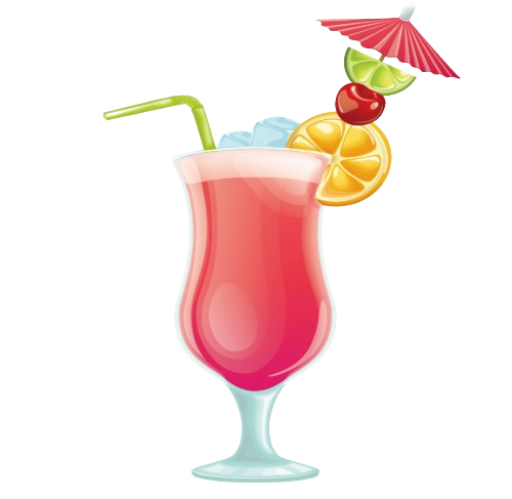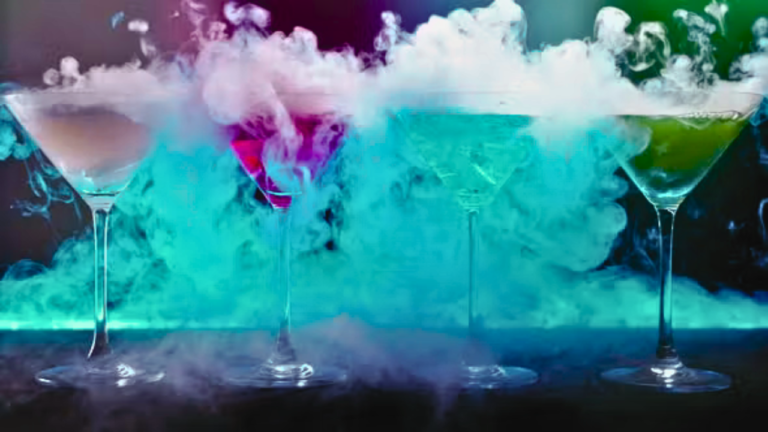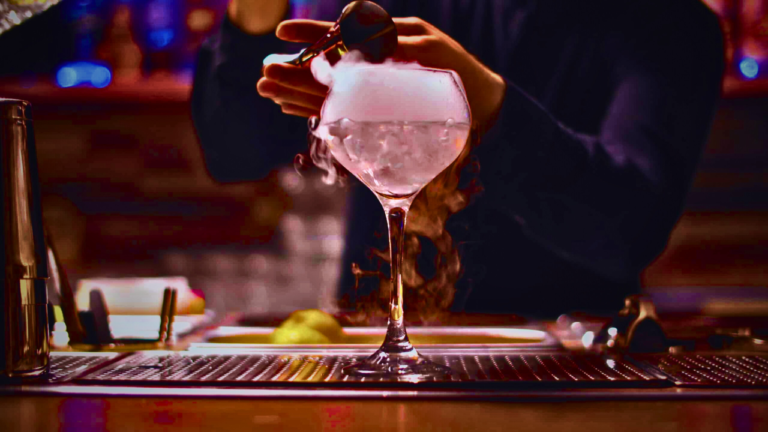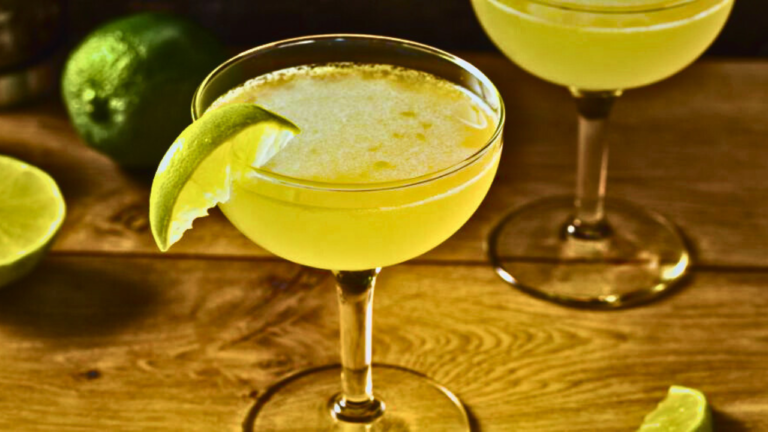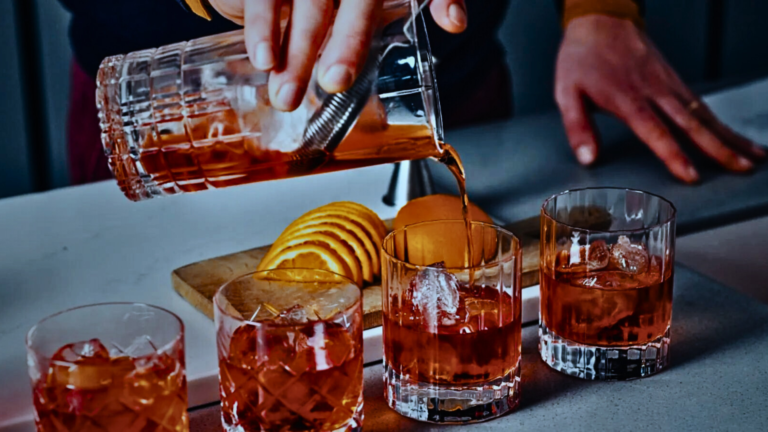What Are the 7 Families of Cocktails?
In the world of cocktails, knowing the basic families is essential for both bartenders and enthusiasts. These seven groups cover a wide range of drinks, each with unique ingredients and histories.
From classics like the Martini to favorites like the Margarita, exploring these categories is a guide to making and enjoying cocktails. In this article, we’ll look at these seven families, where they come from, what sets them apart, and why they’re loved.
Whether you prefer a stirred drink or a fruity mix, exploring these families will delight your taste buds.
Read also: Is Cranberry Cocktail Good?
Introduction to Cocktail Families
Welcome to the world of mixology! Cocktails have stories passed down through generations. Join us on this journey to taste the flavors of seven cocktail families. From classic spirits to fruity mixes, we’ll explore a range of tastes.
Discover the ingredients and techniques behind each family. Learn about their cultural significance and history. So grab your glass and let’s enjoy the artistry and innovation of cocktails!
Exploring the Seven Families of Cocktails: A Dive into Mixology History and Culture
Cocktails are an integral part of social gatherings, bars, and parties, with a rich history that spans centuries. Understanding the classification of cocktails into families provides insight into their origins, ingredients, and cultural significance. In this exploration, we delve into the seven families of cocktails, tracing their evolution from historical roots to modern interpretations.
1. The Punch (circa 1632):
- Originating in British India, Punch is one of the oldest cocktail families.
- Characterized by a combination of spirits, citrus, sugar, water, and spices.
- Notable variations include rum punch, gin punch, and the classic party punch.
- Punches were historically served in large communal bowls, symbolizing conviviality and hospitality.
2. The Milk Punch (circa 1700):
- Dating back to the 18th century, milk punch is a unique category of cocktail.
- Features a mixture of spirits, milk or cream, sugar, and spices.
- Popular variations include brandy milk punch and bourbon milk punch.
- Known for its creamy texture and smooth flavor profile, milk punch has endured through centuries.
3. The Sling (circa 1759):
- Originating in colonial America, the sling is a refreshing and simple cocktail.
- Typically composed of a base spirit, sweetener, and water, it is often served over ice.
- The Singapore Sling, a modern variation, gained popularity in the early 20th century.
- Slings are renowned for their versatility, making them suitable for a wide range of occasions.
4. The Cocktail or Bittered Sling (circa 1806):
- The term “cocktail” originally referred to a specific type of drink rather than a broad category.
- It consists of a spirit base, sugar, water, and bitters, reflecting its medicinal origins.
- Classic examples include the Old Fashioned and the Manhattan.
- Cocktails paved the way for the development of mixology as a craft, emphasizing balance and technique.
5. The Sour (circa 1850):
- Sour cocktails are characterized by their tart flavor profile, derived from citrus juice.
- Typically comprised of a base spirit, citrus juice, and sweetener, such as simple syrup.
- Classic examples include the whiskey sour and the daiquiri.
- Sours showcase the interplay between acidity and sweetness, creating a harmonious balance.
6. The Highball (circa 1870):
- Highballs are simple yet satisfying cocktails, perfect for casual consumption.
- Typically composed of a base spirit and a non-alcoholic mixer, such as soda water or ginger ale,.
- Classic examples include the Scotch and Soda and the Gin and Tonic.
- Highballs are renowned for their refreshing qualities and ease of preparation.
By exploring these seven families, we gain a deeper appreciation for the artistry and craftsmanship behind our favorite drinks. Cheers to the rich history and diversity of cocktails!
Significance of categorizing cocktails into families
Categorizing cocktails into families is crucial in mixology. It helps bartenders and enthusiasts understand the basics of a drink’s ingredients and flavors. By organizing cocktails into groups, mixologists can see patterns and variations more easily, making it simpler to experiment and create new drinks.
Using cocktail families as a common language makes it easier for bartenders to share recipes and for customers to understand menu options. When patrons see familiar categories like “sours” or “tiki drinks,” they know what to expect and can explore new flavors confidently.
Understanding cocktail families also gives insight into the history of mixology. Classic cocktails like the Martini or Margarita belong to specific families, revealing cultural influences and trends over time.
Bartenders need to master cocktail families to create new drinks while honoring tradition. Understanding the basic formulas and flavors of each family enables them to experiment and innovate freely.
Purpose of identifying the seven families of cocktails
Identifying the seven families of cocktails is crucial in mixology. It helps both new and seasoned bartenders understand and organize a wide range of drinks. By sorting cocktails into groups like sours, fizzes, and highballs, bartenders can easily grasp what ingredients and features define each type. This simplifies learning and lets bartenders quickly find and use recipes, ensuring they can serve patrons well and consistently.
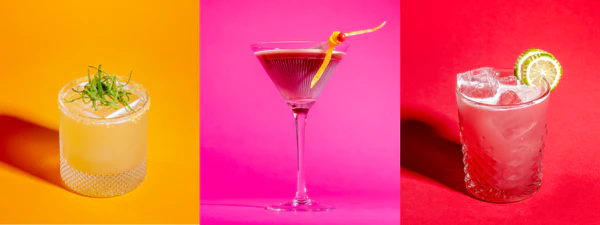
Secondly, knowing the seven families of cocktails helps create menus and talk to customers. When people look at a menu, seeing categories like “sours” or “stirred and spirit-forward” helps them know what flavors and styles to expect. This makes it easier for customers to choose drinks they’ll like, making their experience better and more enjoyable.
Moreover, knowing cocktail families helps bartenders get creative. They can use the basic formulas and flavors of each family to try new things and make special drinks. By starting with traditional recipes and techniques, bartenders can make exciting new drinks while still honoring where they came from. This mix of old and new keeps customers interested and coming back for more.
Read also: What Are The 5 Most Popular Cocktails?
Differentiating features among cocktail families
Understanding the differences between cocktail families is crucial for bartenders and cocktail fans. Each family has its own special traits that make it stand out and affect how the drink tastes and feels.
For example, the sour family is characterized by its use of citrus juice, which provides a tart and refreshing taste to the drink. Classic examples include the Margarita and the Whiskey Sour, both of which feature a balance of sourness from the citrus and sweetness from other ingredients like simple syrup or triple sec.
On the other hand, the fizz family is known for its effervescence, typically achieved through the addition of carbonated water or soda. This creates a light and bubbly texture, making drinks in this family perfect for hot summer days or as a refreshing pick-me-up. The Gin Fizz and the Tom Collins are popular examples of fizzy cocktails that showcase this characteristic.
Highballs, another prominent cocktail family, are defined by their simplicity and versatility. Typically consisting of just two ingredients—a base spirit and a non-alcoholic mixer—highballs are easy to make and can be customized to suit individual preferences. The classic Gin and Tonic and the Rum and Coke exemplify the straightforward nature of highball cocktails.
When bartenders know the differences between cocktail families, they can make drinks for all kinds of tastes and occasions. Whether it’s a tangy sour, a fizzy fizz, or a simple highball, each family has its own unique joys and options. Plus, this knowledge helps bartenders try new things while still keeping the basic traits of each cocktail family. This leads to cool and fun drinks that keep customers coming back for more.
How do the families of cocktails influence modern mixology?

Cocktail families play a pivotal role in shaping modern mixology by providing a rich tapestry of flavors, techniques, and historical context. These families, including the Punch, Sling, Sour, Highball, and more, serve as the foundational pillars upon which bartenders build their craft.
By understanding the unique characteristics of each family, mixologists can draw inspiration from traditional recipes while infusing their creations with contemporary twists. For example, the timeless elegance of the Martini family offers endless possibilities for experimentation with different spirits, vermouths, and garnishes, catering to evolving palates and preferences.
Similarly, the versatility of the Highball family allows for endless variations, from classic Scotch and soda to modern interpretations featuring craft spirits and artisanal mixers. Moreover, the historical significance of cocktail families provides a sense of authenticity and heritage, resonating with consumers seeking memorable drinking experiences.
As consumers increasingly crave authenticity and unique flavor profiles, bartenders leverage the familiarity of cocktail families to craft signature creations that stand out in a crowded market.
Ultimately, cocktail families serve as a roadmap for innovation, guiding mixologists on a journey of exploration and discovery while ensuring a connection to the rich traditions of the past.
Conclusion
In conclusion, there you have it— the captivating world of cocktails, neatly organized into seven distinct families, each with its own story to tell. From the communal conviviality of Punch to the crisp simplicity of the Highball, these families not only preserve the heritage of classic drinks but also inspire modern mixologists to push the boundaries of creativity and flavor.
So next time you belly up to the bar, take a moment to appreciate the rich tapestry of cocktail families and the endless possibilities they offer for a truly unforgettable drinking experience. Cheers to the magic of mixology and the timeless allure of cocktails!
Read also: How Do You Add Dry Ice To A Cocktail?
FAQs
How are cocktail families different from individual cocktails?
Cocktail families categorize cocktails based on shared attributes, such as flavor profiles, ingredients, and serving styles. Individual cocktails, on the other hand, refer to specific recipes or creations within these broader drink family classifications.
What role do spirits play in the 7 families of cocktails?
Spirits are the backbone of most cocktails and are essential in defining the character and taste of a cocktail. Each family of cocktails may feature a different spirit as its base or main ingredient, influencing the overall flavor profile.
How are categories like sours and spirits represented in cocktail families?
Categories such as sours and spirits represent different styles or flavor profiles within the 7 families of cocktails. For example, the sour family includes cocktails that are characterized by a balance of sourness and sweetness, while the spirit-forward family focuses on highlighting the base spirit in the drink.
What is the significance of sugar in cocktail making across different families?
Sugar plays a crucial role in cocktail making by providing sweetness and balance to the overall flavor profile. Different families of cocktails may use varying amounts of sugar or sweeteners based on their specific recipes and taste preferences.

Hello, friends! I’m Tom Elba, the driving force behind cocktailscape.com, your virtual hub for all things cocktails. If you have a passion for mixology or simply enjoy sipping on a well-crafted drink, then you’ve landed in the right place.
At Cocktailscape, I’m dedicated to sharing my love for the art of cocktail-making through tantalizing recipes, expert tips, and vibrant stories from the world of mixology. Whether you’re a seasoned bartender or an enthusiastic home cocktail enthusiast, there’s something here for everyone.
From classic concoctions like the Old Fashioned and the Martini to innovative twists and modern creations, I’m here to inspire you to shake, stir, and sip your way through a world of flavor.
But Cocktailscape is more than just recipes—it’s a celebration of culture, creativity, and community. I delve into the history behind iconic cocktails, explore emerging trends in the industry, and spotlight talented bartenders from around the globe.
So whether you’re looking to expand your cocktail repertoire, host the perfect soirée, or simply unwind with a refreshing drink after a long day, Cocktailscape has got you covered. Cheers to endless possibilities and unforgettable sips—let’s raise a glass together at cocktailscape.com!
